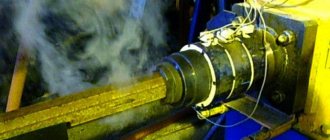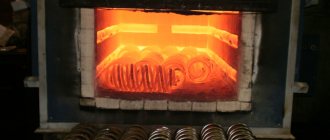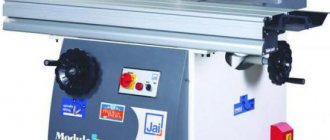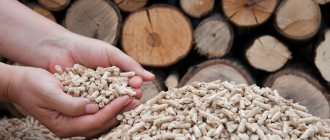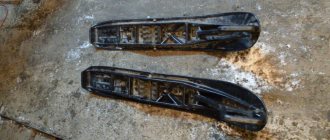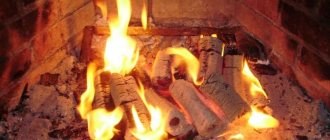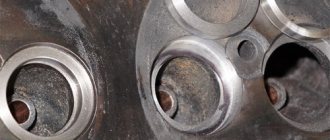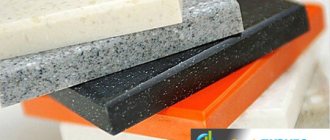The world is slowly but surely moving towards zero-waste production. Today it is obvious that such a valuable resource as straw cannot be underestimated from an energy point of view. Moreover, such “simple” disposal methods as burning old grass in the fields, which in fact only harms the soil, should remain a thing of the past.
Straw has long been used as a promising raw material for pellets. The advantage of this type of raw material is that it is very cheap or free for agricultural enterprises, and its energy value is not inferior to wood. Purchasing equipment for the production of straw pellets can be a profitable investment for large agricultural complexes. Instead of losses from the disposal of dry stalks, you can make a profit from the sale of straw pellets.
Why is straw a promising raw material for pellets, and what equipment is needed for their production?
Straw as fuel: calorific value
The specific calorific value of any fuel is measured in various units, but the easiest way to do this is in kilowatts (kW) per 1 kg of weight, but you can use megajoules (MJ) or kilocalories (kCal).
We have compiled a table that includes the calorific value of various types of straw and those materials that are most often used for heating a house or cottage:
| Material | Calorific value | ||
| kcal | kW | MJ | |
| Fresh wheat straw | 3400 | 3,95 | 14,2 |
| Dry wheat straw | 3750 | 4,4 | 15,7 |
| Fresh flax straw | 3400 | 3,95 | 14,2 |
| Dry flax straw | 3805 | 4,4 | 16 |
| Fresh straw pellets/briquettes (humidity 30–40%) | 3500 | 4 | 14,65 |
| Straw pellets/briquettes after drying (humidity 10–15%) | 4000 | 4,65 | 16,7 |
| Fresh firewood (humidity 50–60%) | 1940 | 2,2 | 8,1 |
| Dry firewood (humidity 20%) | 3400 | 3,95 | 14,2 |
| Brown coal | 3100 | 3,6 | 13 |
| Black coal (stone) | 6450 | 7,5 | 27 |
| Dry chips (humidity 20–30%) | 2610 | 3 | 11 |
| Sawdust (humidity 20–40%) | 2100 | 2,4 | 8,8 |
| Pellets/briquettes from sawdust or wood chips | 4100 | 4,8 | 17,1 |
In terms of its calorific value, straw is on the same level as dried wood, so it is well suited for heating .
The only problem is that the uncompressed material takes up too much volume.
Therefore, to transform this material into a full-fledged fuel, it is necessary to somehow increase its density. However, there are heating stoves that can operate on uncompressed straw, but they are all very large in size and low in efficiency.
Equipment for the production of straw pellets
As already mentioned, this type of raw material usually arrives dry or is dried in a short time at the plant. A large shed or ventilated area is required to store straw bales.
The technological line for the production of straw pellets usually does not include a drying section. The necessary equipment for this material is a straw bale chopper, which is installed instead of a wood chipper.
So, the line consists of the following stages.
Primary chopping
The initial stage of straw processing is the chopping of bales and rolls using a special apparatus. A bale chopper is a chipper with a large, round chamber in which a rotor cuts bales and rolls. In order for the grass chaff to be homogeneous in fraction, it is necessary to grind it further at the next stage.
Fine grinding
The chaff is sent to a rotary crusher, which is configured specifically for cutting stems. A sieve is installed on the crusher, which allows only particles up to 5 mm in length to pass through. The chopped straw is thrown through a pressure pneumatic hose further into the hopper.
Bunker agitator
A cylinder-shaped reservoir is located above the granulator; a mixer operates inside it, which prevents the raw material from clumping. The device has a dispenser that evenly supplies straw to the receiving hopper of the granulator.
Press granulator
An industrial granulator OGM with a ring matrix compresses pellets from organic raw materials, rolling it with rollers through a ring matrix under pressure. An important role in the formation of the granule is played by the lignin contained in the straw and the water vapor supplied from the steam generator.
Cooling column
Hot pellets are delivered by a scraper conveyor to the pellet cooling column. In the column they are blown with cool air and gain strength. Small non-granular particles are separated through a sieve.
Packing
After cooling, the product is sent for packaging in big bags or bags. The packaging unit usually has a weighing dispenser that measures the required amount of granules, a frame for big bags and other auxiliary equipment.
Aspiration system
A system of cyclones, air ducts, airlocks, and fans is necessary to ensure that small dust particles do not enter the air and settle in the lungs of workers. The aspiration system is designed to filter grass dust from the air and precipitate it in cyclones.
DIY fuel briquettes
There are three main ways to make briquettes:
- baling;
- gluing;
- pressing.
Baling
Baling, as well as rolling into rolls, is carried out using special units standardly installed on combines, as well as in the form of trailed or mounted devices (hay balers).
Such devices can be made with your own hands, which is confirmed by the discussion of making briquettes on various forums and reports on them.
The only disadvantage of baling is that it is impossible to achieve a density comparable to at least dried wood, so the stove or boiler must be large enough , especially if you do not want to add fuel every hour.
If you make a baler from thick wood or metal, and create pressure not manually, but using a hydraulic or electric drive, you can achieve half or three-quarters of the density of dry wood, which will reduce the size of the heating device.
Regardless of the density of the bale, its strength directly depends on its size, so the larger it is, the more durable it will be .
This is due to the fact that each straw is not only crushed, but also intertwined with others, so the more of them intertwined, the stronger the bale or roll will be.
For the same reason, large rolls weighing several centners are the strongest. It is impossible to make bales the size of a brick in this way, and even of sufficient strength, so the method is applicable only for the production of large briquettes.
We have prepared links to the most interesting discussions and reports:
- fermer.ru.
- forum.fermeri.com.ua.
- www.ya-fermer.ru.
Gluing
This method does not greatly increase the density of compressed straw, but it allows you to make briquettes of any size, up to pellets with a diameter of several mm.
To make briquettes this way, you will need:
- any organic binder;
- grass chopper;
- soaking container;
- a press with molds coated with a substance that has zero adhesion to the selected binder.
To make fuel this way, you will need any organic glue or glue-like binder, such as :
- expired or damaged wallpaper glue;
- spoiled flour or starch;
- manure or droppings.
The latter material gives the best results, because excrement after drying not only has a high calorific value and also binds straw particles well to each other, but also does not form complex toxic substances after combustion.
You should not use PVA and other synthetic adhesives as a binder, because during combustion they form toxic and carcinogenic substances that pose a threat to humans.
Despite the fact that the smoke comes out into the chimney, it does not dissolve in the atmosphere, but gradually falls to the ground, so it first reaches the level of inhaled air, and then mixes with groundwater and forms toxic and carcinogenic solutions.
To make fuel this way, proceed as follows :
- Chop the straw; the articles Straw Cutter and DIY Straw Cutter will help you with this.
- Mix the chopped vegetation with a binder (the method of preparing the binder, as well as its quantity, depends on the type of substance, so the optimal proportions only come with experience).
- Load the required amount of mixture into the press dies and press them. In most cases, you have to make several loads; to avoid this, you need a large press stroke, that is, a large initial volume of the matrix. The normal density for such fuel is a quarter or half of the density of dry wood, that is, 200–400 kg/m3. If a higher density is required, you will have to use unshredded straw, which is much more difficult to work with. Another way is to press under higher pressure, but this will require maintaining pressure until at least the initial polymerization of the binder.
- Remove the compressed briquette from the matrix and dry to a moisture content of 20%.
- Store fuel only in dry, ventilated areas.
If the selected binder has high adhesion to the mold, in other words, if the glue sticks to it, then treat the surface of the mold and press matrix with silicone spray or other preparations that have zero adhesion to the selected binder.
Pressing
This method is the most complex, but at the same time the most effective, because the density of the finished product is comparable to the density of dried oak or hornbeam wood, and also has a high calorific value .
The basis of this method is one of the features of lignin, which turns into a liquid state at a pressure of 100–150 atm.
At this pressure, the straw becomes very hot, but due to the lack of oxygen, it does not oxidize, so instead of combustion, the lignin melts and glues neighboring straws together. This process occurs throughout the entire compressible volume of the straw, so after pressing it is a single, fairly strong mass .
It is quite difficult to make a press or extruder at home that not only creates the necessary pressure, but also has more or less decent productivity.
You can make a press from a powerful hydraulic jack, but to create a briquette 5 cm thick you will need a force of 3 tons, but if you make at least 10 briquettes at the same time, then the force should be at least 30 tons.
In addition, the press stroke must be at least 4 times the length of the finished briquette (more is better), and such a unit cannot be made small and mobile.
If you make a screw press with an internal diameter of 10 cm, then it must create a pressure of at least 10 tons, that is, you will need not only a 5-10 kW motor, but also a fairly durable worm gearbox capable of withstanding such a load. But even after getting all this, you will have to seriously invest in making the housing and the screw, and you will also need replaceable dies with holes of different diameters .
In addition, straw is suitable for pressing, the moisture content of which is in the range of 6–12%, that is, in addition to chopping it, it will also have to be dried using a vacuum or heat dryer. All this equipment consumes quite a lot of electricity, so it is impossible to use it at home.
We talked in more detail about such equipment and the general principles of organizing production in these articles:
- Sawdust briquettes.
- Equipment for processing wood waste.
- Sawdust recycling business.
Equipment for the production of pellets
The main role in the technological process is played by the machine for the production of pellets, which is also the most difficult to manufacture. It will not be possible to completely make a granulator with your own hands, since to manufacture the matrix and rollers you need metalworking machines - lathe, milling, drilling and grinding. So there are 2 options: buy a ready-made matrix-roller pair or order it from the craftsmen.
Advice. Making a machine for homemade pellets using purchased parts is a risky decision. You will not be able to check the quality of the material and the accuracy of processing, and the matrix can quickly fail. It is better to find the necessary material and give the order to specialists - machine operators.
The matrix pair for the pellet press should be made of high-carbon steel St45 or St50, or even better alloyed with manganese HVG or 65G. Moreover, after processing, the parts must undergo a hardening process in order to achieve a hardness of 58-60 units. To make a matrix for a granulator, you need to maintain all the dimensions indicated in the diagram:
You can use simpler steel for the roller shaft - St3, 10 or 20, and there is no need to harden it. But the working parts of the rolls must be made from the above grades, followed by hardening, and then mounted on the shaft through bearings, as shown in the photo below.
Important. Hardened parts for a pellet press must undergo a grinding process on all working surfaces.
Now let’s talk about what you can use to assemble the housing and drive for a homemade pellet granulator. The matrix pair must be placed inside a cylindrical body, which is made of sheet metal or a pipe with an internal diameter of 200 mm. The drive shaft is inserted into the matrix hole and secured with a key, and below you need to make a platform for the finished pellets. The assembly diagram of the pellet granulator is shown in detail in the video:
Watch this video on YouTube
To rotate the shaft, you need to take an electric motor with a power of at least 5 kW, and the drive can be assembled from an old automobile gearbox from a Volga or Moskvich with part of the rear axle. On the side where the driveshaft is to be connected to the gearbox, a pulley is installed, rotated by a belt drive from an electric motor. Both units are attached to the same frame, as described in the video:
Watch this video on YouTube
Note. In this design of a press for making pellets with your own hands, the shaft rotates the matrix, and the rollers remain stationary. The pulleys must be selected so that its rotation speed is no more than 250 rpm.
Homemade crusher
It’s good when it is possible to obtain good small wood waste from some production for pressing pellets. If this waste contains small branches or slabs, then to grind them you will need additional equipment - a crusher. There are many homemade structures, but most of them cut wood into chips that are too large, from which it is impossible to make pellets at home.
We present to your attention a simple wood waste crusher made from 3 dozen circular saws for a circular saw with carbide tips. All saws are mounted on one shaft in such a way that the teeth of each subsequent one are slightly offset relative to the previous one. A pulley and 2 bearings at the edges are placed on the same shaft, after which the entire structure is fixed to a frame made of angles or pipes.
Note. Here, too, you need a powerful engine so that the saws can “gnaw” branches and other small pieces of wood well.
As you understand, the productivity of the unit is low, but such a wood waste crusher will produce sawdust suitable for the production of pellets. If you have a circular saw on your farm, then the chopper can be adapted to its frame, as is done in the photo:
Sawdust dryer
To ensure that home-made wood pellets do not crumble at the exit from the granulator matrix, it is necessary to ensure the minimum moisture content of the raw materials. In industry, this occurs in various drying chambers. At home, craftsmen have adapted to assembling drum-type sawdust dryers, since their design is the simplest, as shown in the diagram:
Several iron barrels, welded to one another, are mounted on a frame with a slight inclination to one side. Blades are welded from the inside to the walls of the barrels to mix the raw materials. On one side, hot air is supplied inside such an improvised drum using a gas or electric heat gun. The rotation of the drum is carried out by an electric motor through a gearbox or a reduction belt drive.
For reference. When pellets are made from fresh wood waste, the greatest energy consumption occurs in the drying process. For home production, they may be too large, negating all the benefits of this venture.
What is better for heating?
Bale heating requires very large boilers.
In addition, this process cannot be automated, that is, at least once a day you will have to approach the boiler and put a new portion of flammable material into it.
In addition, carrying fairly large bales is not very convenient, so heating with straw in briquettes, even in stoves and boilers without automatic feeding, is much more convenient, because the volume of fuel required to release the same amount of heat is many times smaller.
The situation with pellets is somewhat different, because due to their small size they are difficult to load into conventional boilers or stoves, but they are well suited for long-burning heating devices with vertical fuel loading. Like briquettes, they take up much less space than bales, which means the same volume is enough either for stronger heating or for longer operation, allowing for less frequent loading of fuel.
However, the strongest differences appear if a solid fuel heating device with automatic loading of combustible material is installed in the house, because neither straw nor firewood are suitable for such devices.
But briquettes, due to their identical shape, and pellets, due to their small size, are well suited for such devices, so after putting fuel in the bunker, you don’t have to worry about fuel for several days .
Literature on pellet production
As I already said, I can help with organizing your production, provide technological support, or select and find used equipment quite inexpensively. Often, typical new equipment for pellets is not suitable for a specific production, for each you need to develop your own specifications, your own conditions, the most typical mistakes of manufacturers can be found in my book, more details about it in the “MY BOOKS” section.
Good luck and see you again, Andrey Noak was with you!
Is making briquettes justified?
The average cost of non-automatic, that is, requiring constant attention, equipment for the production of briquettes or pellets, including a dryer, is one million rubles, and installing a fully automated line will require at least 2 million rubles .
In addition, even a fully automated line still requires human participation, because it is necessary to load the raw materials into bins, then periodically check the process and put the finished product aside.
All this says one thing - making briquettes or pellets for heating your home does not make any sense, unless you have a couple of extra million rubles that can be spent on such entertainment.
Application of pellets
The main purpose of pellets is combustion in boilers as a heat source. Widely used in thermal power plants with a capacity exceeding 500 Megawatts. The specific heat of this product is not inferior to dry firewood or even peat. Depending on what raw materials the pellets were made from, their energy intensity may vary.
We recommend reading: Review and characteristics of gas boilers
Application of pellets
The most commonly used raw material is sawdust, since it is available in sufficient quantities at all woodworking enterprises. The heat that can be obtained from their combustion is 4 kW/h/kg. This is enough to heat a small country house. In addition to heating, pellets are used as toilet fillers as a non-standard application. In fact, the scope of pellet application is very wide.
Business profitability
The finished product will have to compete with the same briquettes or pellets made from sunflower husks, and their average cost is 6 rubles per 1 kg.
If, taking into account all expenses, you can reduce the price to at least four rubles, then your product will successfully compete with briquettes or husk pellets, because wholesale prices for this fuel average 5 rubles per 1 kg.
You can achieve such a cost price only if you get the straw for free, and you don’t have to transport it far from the place of receipt to the place of processing, and electricity is supplied to you at a low tariff.
In addition, to cover all costs and obtain any noticeable profit, you need an established distribution channel capable of receiving tens of tons of this fuel daily.
If there is no such channel, then there is no need to talk about any profit, because even short-term storage of finished fuel involves its delivery to a specially equipped room with forced ventilation and a humidity level of 5–10%. This means that you will have to spend money on the construction and maintenance of such a premises, which reduces the already low income.
Where to buy a straw pelleting line?
All necessary equipment for the production of straw pellets is produced by the ALB Group company in Nizhny Novgorod.
We have installed dozens of pellet lines working with a wide variety of raw materials throughout Russia. Among other things, we worked with straw, as well as with other types of agricultural raw materials, for example sunflower husks
Rate our projects:
Hay Pelleting Line
Sunflower husk granulation line
Sunflower husk granulation line
From ALB Group you can order both a full complex of dry grass processing and individual elements of the complex. Our OGM 0.8 and 1.5 granulators show high productivity and product quality when working with hay/straw. If necessary, we can arrange a tour of existing enterprises and demonstrate our technologies live.
Starting and maintaining the boiler
Comparison of heating costs
Launch
The equipment can be started only after installing the pellet boiler and connecting the corresponding heating system pipes to it. Once the mentioned tasks are completed, turn on the cold water supply to the heating system.
Observe the operation of the boiler. If any unusual symptoms occur, turn off the equipment and do not use it until the problem is resolved.
Observe the boiler operation
Care
Homemade pellet boilers, like any other heating units, require appropriate care.
Every 2-3 weeks, empty the ash pan of waste. Clean the smoke exhaust duct every 2-4 weeks. This will not take you much time, but ignoring such simple maintenance will lead to a significant decrease in the efficiency of the boiler and make the equipment potentially unsafe.
If desired, additional automation equipment can be connected to the pellet boiler. This will make the operation of the equipment more convenient - you can simply forget about the need to reload fuel and other related activities for some time.
Modern automation tools even allow you to set up remote control of the heating unit, which is also very convenient.
And these are not the only possible additions. How do you like, for example, self-cleaning systems for boilers? Be sure to study the available modifications and, if desired, purchase such additions for your boiler.
Boiler with pellet hopper
You can assemble a simple pellet boiler with your own hands, following the instructions you received earlier.
Good luck!
How to write a business plan for making pellets
Drawing up a business plan is a responsible process that requires thorough research and, in many ways, is individual. Important factors when drawing up a plan will be the level of competition in the region, the proximity of sources of raw materials and the availability of potential customers.
You should focus on a 3-month payback for home production and an annual payback for a medium-sized enterprise. However, even if the final calculations turn out to be less optimistic, what is much more important is the entrepreneur’s own expectations from the business and the goals that he sets for himself in the long term.
Production of pellets and fuel briquettes at home
